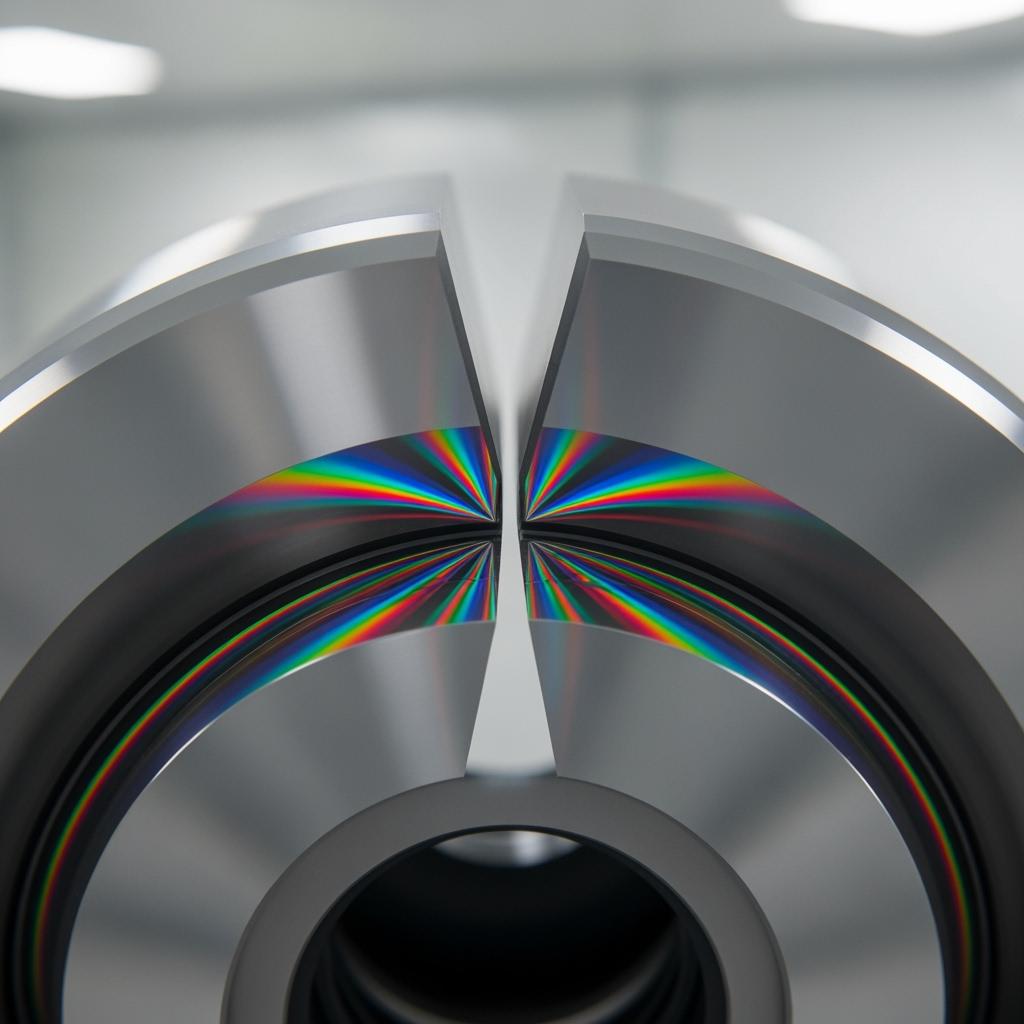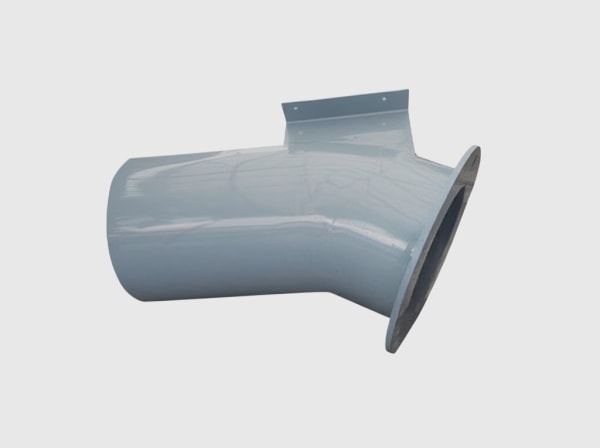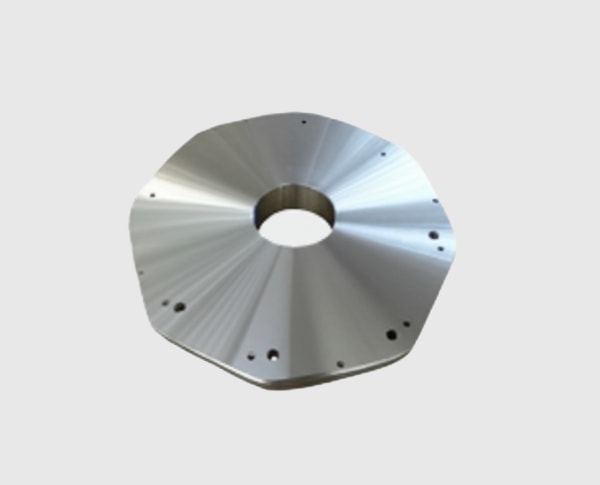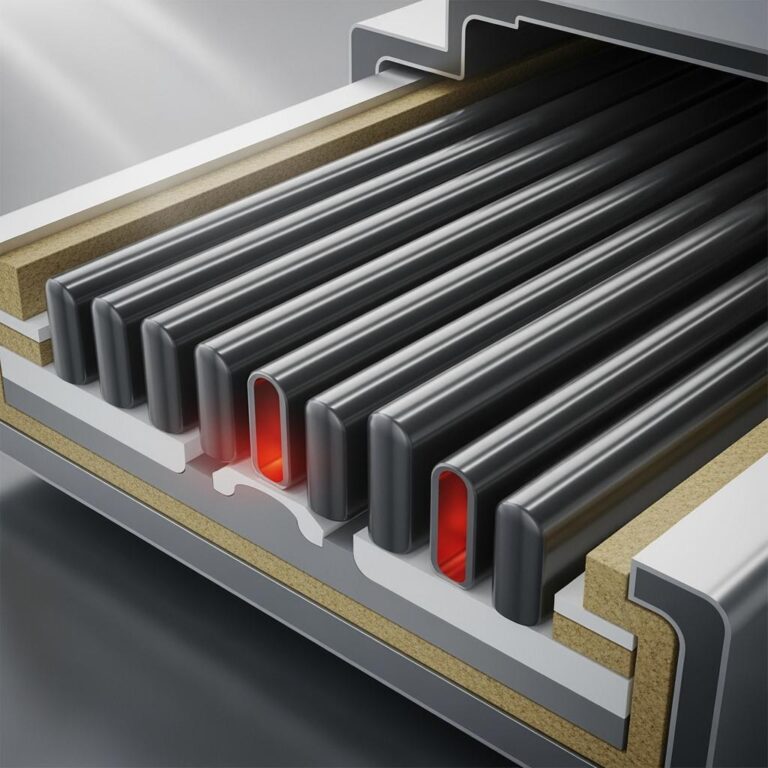Sicarbtech — Silicon Carbide Solutions Expert. Based in Weifang City, China’s silicon carbide manufacturing hub and a member of the Chinese Academy of Sciences (Weifang) Innovation Park, we help Pakistan’s textile, cement, steel, energy, and emerging industrial sectors specify, qualify, and scale high‑purity silicon carbide (SiC) powders and ceramics. With 10+ years of customization experience and proven outcomes across 19+ enterprises, Sicarbtech delivers full‑cycle solutions—from powder processing and classification to advanced R‑SiC, SSiC, RBSiC, and SiSiC components—backed by OEM/ODM services, factory establishment, and technology transfer. Contact: [email protected], +86 133 6536 0038.
Executive Summary: 2025 Outlook for High‑Purity SiC in Pakistan
Pakistan’s industrial base is re‑tooling for reliability and export‑grade quality. Volatile energy costs, PKR fluctuations, and stricter provincial environmental enforcement are reshaping procurement from unit price to lifecycle value. In this context, high‑purity silicon carbide is moving center stage. Whether used as graded powders for abrasives and sintering, or as dense engineered ceramics for hot‑zone duty, seals, and thermal management, high‑purity SiC enables tighter temperature control, reduced wear, and cleaner audits—outcomes that directly support textile productivity, cement kiln stability, steel furnace efficiency, and growth in specialty processing.
Furthermore, buyer expectations are evolving. PSQCA‑referenced conformity and ISO 9001/14001/45001 documentation are increasingly prerequisites for tenders; export customers request traceable batches, third‑party test reports, and in some cases REACH/RoHS declarations. This favors suppliers who combine materials science with documentation discipline and predictable logistics. Building on this shift, Sicarbtech integrates high‑purity SiC materials with FEA/CFD‑led application engineering, PPAP‑style evidence for OEMs, and PKR‑based ROI models, enabling Pakistani procurement teams to defend specifications and align deliveries with outage calendars through 2025 and beyond.
Industry Challenges and Pain Points in Pakistan’s High‑Purity SiC Procurement
Across Punjab’s textile clusters, Sindh’s cement and stalowego corridors, and KP’s emerging processing lines, buyers report the same three problems: inconsistency, downtime, and documentation gaps. On paper, two “high‑purity” SiC powders can look similar; in practice, slight differences in particle size distribution, shape factor, and impurity chemistry change sintering behavior, flow performance, and abrasive cutting mechanics. The result is variable throughput, overheating in grinding, or microstructural drift in sintered parts. When ceramic components enter hot‑zone service, minor variations in porosity, grain size, or residual silica can magnify under thermal shock, leading to premature cracking or oxidation.
Operational realities compound the issue. Load shedding and monsoon humidity push furnaces and kilns through start‑stop profiles that punish marginal refractories and kiln furniture. Textile dye pumps and chemical seals run in mixed chemistries and variable temperatures, exposing surface finishes and flatness to accelerated wear; small deviations in seal quality escalate into leak incidents, cleanup costs, and lost batches. “Every unplanned intervention multiplies cost across departments—production, maintenance, logistics, and customer service,” observes Engr. Faraz Khan, a reliability auditor active across Punjab’s industrial estates (South Asia Reliability Insights, 2024). He argues that mean time between failures must be engineered to align with planned shutdowns; otherwise, indirect costs quickly overwhelm headline savings.
Documentation also lags. Some imports arrive with generic datasheets rather than batch‑linked COAs. Without credible density/porosity, impurity, and mechanical test data, audits stall and root‑cause analysis becomes guesswork. Insurers, export buyers, and provincial regulators increasingly request evidence of preventive maintenance and materials traceability. “Documentation is not bureaucracy—it is the scaffolding that keeps quality stable across time and teams,” notes Dr. Nadia Rahman, EHS advisor to multiple estates (EHS & Industry Review, 2024). In contrast, transactional sourcing without metrology or packaging engineered for Pakistani warehousing invites moisture ingress, handling damage, and performance drift before materials even reach the floor.
Moreover, specmanship can work against local teams. Aggressive tolerances from metal parts are sometimes copy‑pasted into ceramic drawings without accounting for ceramic forming and sintering realities. Designs that ignore off‑gassing, joint design, or thermal gradients look feasible in CAD but fail in duty. “Reliability is engineered, not purchased off a catalog,” adds Prof. Liu, a ceramics specialist associated with the Chinese Academy of Sciences (Materials Engineering Commentaries, 2024). The path forward in 2025 is clear: integrate materials selection with application modeling, manufacturability reviews, and audit‑ready documentation.
Sicarbtech’s High‑Purity Silicon Carbide Solutions Portfolio
Sicarbtech aligns high‑purity SiC with the way Pakistani plants actually run. For powders, we provide black and green SiC in high‑purity grades, precisely classified from macrogrits to microgrits. We control particle size distributions, shape indices, and impurity ceilings to stabilize grinding temperature, sintering kinetics, and flow behavior. OEM packaging—lined ton‑bags with moisture barriers, palletization for local racking, and batch‑linked COAs—protects material integrity from port to plant.
For engineered ceramics, we specialize in R‑SiC, SSiC, RBSiC, and SiSiC. In cement and steel hot‑zones, SiC‑rich tiles, bricks, and monolithics flatten thermal gradients and resist erosive particle streams, extending campaigns and lowering fuel intensity. In textiles and chemicals, SSiC mechanical seal faces, bushings, and valve seats deliver mirror finishes and flatness that hold up under mixed chemistries, reducing leakage and energy draw. For process heaters and recuperators, SiSiC radiant elements and compact cores maintain emissivity and geometry in oxidizing atmospheres, improving heat‑up and uniformity. Each solution begins with duty mapping and FEA/CFD where appropriate; proprietary firing or infiltration profiles lock microstructure; finishing and lapping deliver functional surfaces; and documentation aligns with PSQCA references, ISO 9001/14001/45001, and, on request, REACH/RoHS. OEMs and export‑linked buyers can receive IATF 16949‑aligned control plans and PPAP‑style packs for faster acceptance.
Technical Performance Comparison for Local Duty Cycles
Thermo‑mechanical and chemical properties relevant to Pakistani industry
| Property and operating relevance | R‑SiC (Recrystallized) | SSiC (Sintered) | RBSiC / SiSiC (Reaction‑bonded) | High‑alumina ceramic | Heat‑resistant alloy steel |
|---|---|---|---|---|---|
| Maximum service temperature in air (°C) | 1,650–1,700 | 1,600–1,700 | 1,380–1,480 | 1,400–1,600 | 900–1,100 |
| Thermal conductivity at 25°C (W/m·K) | 20–35 | 90–120 | 60–80 | 2–6 | 16–25 |
| Coefficient of thermal expansion (×10⁻⁶/K) | ~4.0–4.5 | ~4.0–4.2 | ~4.2–4.8 | 6–8 | 14–17 |
| Flexural strength at RT (MPa) | 100–180 | 350–450 | 280–380 | 30–60 | 150–220 |
| Hardness (HV10) | 22–24 GPa | 24–26 GPa | 20–22 GPa | 10–12 GPa | 2–4 GPa |
| Oxidation resistance at 1,200°C | Doskonały | Doskonały | Bardzo dobry | Dobry | Uczciwy |
High‑purity SiC’s low expansion and high conductivity protect geometry during rapid cycling common in start‑stop operations, while hardness and oxidation resistance preserve surfaces in erosive, oxygen‑rich gases.
Powder and sintering behavior for high‑purity SiC versus common alternatives
| Consideration | High‑purity SiC powder (green/black) | Alumina powder | Fused silica |
|---|---|---|---|
| Sintering aids sensitivity | Moderate; tight impurity control stabilizes densification | Moderate; well‑documented aids | Low; different temperature window |
| Grain morphology impact | Strong; shape factor drives packing and shrinkage | Umiarkowany | Niski-umiarkowany |
| Thermal conductivity of final body | High to very high (grade dependent) | Niski-umiarkowany | Niski |
| Shock tolerance of final body | Wysoki | Umiarkowany | High but softens at high T |
| Suitability for hot‑zone duty | Excellent with proper grade | Umiarkowany | Limited at sustained high T |
Controlling impurities (e.g., free silica, metallic trace) and morphology in high‑purity SiC powders yields predictable densification and final‑part conductivity—critical for kiln furniture, radiant components, and precision seals.
Lifecycle economics in representative Pakistani use cases
| Local application | Conventional baseline | Sicarbtech high‑purity SiC solution | Throughput/energy impact | Maintenance impact | Indicative payback (months) |
|---|---|---|---|---|---|
| Cement preheater liners | High‑alumina bricks | SiC‑rich segmented tiles (high‑purity fillers) | Lower pressure drop; fewer blockages | 2–3× wear life | 6–12 |
| Textile dye pump seals | Carbon/alumina pairs | SSiC mirror‑lapped faces | Lower friction; cooler operation | >60% fewer leaks | 4–7 |
| Process heater recuperator | Alloy/ceramic hybrids | SiSiC compact cores | Higher heat recovery; stable ΔT | Reduced fouling | 8–12 |
| Roll grinding abrasives | Mixed fused alumina | High‑purity black SiC graded grains | Faster removal; cooler cut | Longer wheel life | 3–8 |
These ranges reflect conditions reported by Pakistani plants. The through‑line is consistent: engineered, high‑purity SiC lowers energy intensity and aligns interventions with planned outages.
Real‑World Applications and Success Stories from Pakistan
A 5,000 TPD cement plant in North Punjab faced rapid wear and monsoon‑driven fouling in preheater elbows. Sicarbtech engineered SiC‑rich segmented tiles using high‑purity fillers and a joint design tuned to duct movement. Gas pressure stabilized, fouling intervals lengthened, and campaign life extended into the next planned shutdown. Payback was achieved in under twelve months after tallying reduced emergency work and fuel.
In a Karachi steel mini‑mill, roll‑grinding performance varied with each abrasive lot. We standardized high‑purity black SiC grains with narrower particle size distribution and controlled shape, collaborating with a local wheel maker on a compatible bond system. Removal rates rose by double digits, burn marks disappeared, and wheel change frequency dropped, raising throughput without additional power draw.
A Sindh textile dyeing cluster struggled with recurring seal leaks and thermal rise in dye pumps. Sicarbtech supplied SSiC‑on‑SSiC mechanical seal faces with sub‑micron flatness, paired with a flush design and installation SOPs. Leak incidents fell sharply, maintenance aligned with planned outages, and energy intensity improved due to reduced friction.



Zalety techniczne i korzyści z wdrożenia z lokalną zgodnością
High‑purity silicon carbide translates physics into plant results. Thermal conductivity and low expansion flatten gradients and shorten heat‑up times; hardness and oxidation resistance preserve surfaces in abrasive, oxygen‑rich flows; and dense microstructures maintain geometry under load. For Pakistani operations, this means fewer hot‑spot failures, tighter temperature bands, lower specific fuel consumption, and longer campaigns that match planned shutdown calendars.
Sicarbtech designs for compliance. We package PSQCA‑referenced conformity, ISO 9001/14001/45001 documentation, and, when needed, third‑party testing and REACH/RoHS declarations. Installation SOPs cover substrate preparation, anchoring/joint design, compatible mortars or gaskets, torque sequences, and controlled dry‑out and heat‑up curves. For OEM programs and export‑linked projects, we prepare IATF 16949‑aligned control plans, capability studies, and PPAP‑style submissions. “Compliance is a design constraint, not an afterthought,” emphasizes Dr. Li, CAS‑affiliated materials scientist (CAS Industry Notes, 2024). By engineering both the part and the paper trail, acceptance cycles shrink and audit risk falls.
Custom Manufacturing and Technology Transfer Services by Sicarbtech
Sicarbtech’s competitive advantage is a turnkey model that fuses advanced R&D, disciplined manufacturing, and knowledge transfer—anchored by the Chinese Academy of Sciences (Weifang) Innovation Park.
We specialize in high‑purity SiC powders and R‑SiC, SSiC, RBSiC, SiSiC components. Controlled powder chemistry and distributions underpin repeatable microstructures and sintering kinetics. Forming methods—cold isostatic pressing, slip casting, extrusion, and precision molding—support complex channels, thin walls, and large monoliths. Proprietary firing and reaction‑bonding profiles lock density, grain structure, and bonding, while machining and mirror lapping deliver flatness, roughness, and tolerances tuned to heat transfer, sealing, or wear interfaces. Thermo‑mechanical validation via FEA/CFD ensures geometry survives cycling, flow‑induced stresses, and thermal gradients.
Technology transfer packages enable Pakistani partners to localize value and mitigate FX risk. We provide process know‑how from raw material conditioning through forming, debinding, sintering/infiltration, machining, lapping, and inspection; equipment specifications for mixers, presses, classifiers, kilns/furnaces, CMP/lapping, and metrology; and training programs for operators, QC, and maintenance. Factory establishment services cover feasibility studies, utilities and HVAC, plant layout, EHS alignment with provincial regulations, and line commissioning. Hybrid models keep critical high‑temperature steps in Weifang while grading, blending, finishing, packaging, and inspection occur locally—shortening lead times and building domestic capability.
Quality control systems and certification support are integral. Statistical process control monitors PSD, shape, impurities for powders; density, porosity, strength, thermal conductivity, flatness/roughness for ceramics; and pressure/leak tests for heat‑exchange parts. We prepare control plans, run capability studies (Cp/Cpk), and support MSA and PPAP where required. Post‑launch, our engineers remain engaged—tuning firing curves, refining tooling, optimizing yields, and closing the loop with field data. Over a decade and 19+ enterprise collaborations, this comprehensive, transferable capability has delivered faster qualifications, fewer first‑run issues, and clear PKR‑based ROI for Pakistani buyers.
Future Market Opportunities and 2025+ Trends for High‑Purity SiC in Pakistan
Three forces will expand high‑purity SiC adoption beyond 2025. First, energy economics and ESG reporting will keep rewarding materials that stabilize heat transfer and extend service intervals, especially in mixed‑fuel cement lines and steel reheat furnaces. Second, export customers will tighten documentation expectations—batch traceability, PPAP‑style evidence, and environmental declarations—favoring suppliers who engineer both materials and paperwork. Third, localization will move downstream steps—grading, finishing, metrology, and packaging—closer to Pakistani plants, reducing lead times and currency exposure.
Additionally, process intensification is accelerating. Textile finishing and dyeing lines will pursue higher throughput with tighter temperature control; ceramics and glass kilns will push for shorter cycles and fewer defects; and specialty chemical processes will demand tighter corrosion and abrasion resistance. In each case, high‑purity SiC’s combination of conductivity, hardness, and oxidation resistance becomes a structural advantage. As trial projects convert to framework agreements, early adopters of engineered, high‑purity SiC will capture durable cost and quality advantages.
Często zadawane pytania
What qualifies as “high‑purity” silicon carbide in industrial procurement?
High‑purity SiC typically refers to tightly controlled impurity levels (low metallics, low free silica/oxygen), consistent particle size distribution, and stable morphology that produce predictable sintering and thermal/mechanical properties. We define purity targets per application and validate with COAs and, when needed, third‑party tests.
How do I choose between R‑SiC, SSiC, and SiSiC for my application?
R‑SiC excels in thermal‑shock‑heavy tiles and kiln furniture; SSiC offers premium density, hardness, and polish for seals and precision parts; SiSiC (RBSiC) balances shape complexity with strong conductivity for radiant, wear, and heat‑exchange components. We finalize selection after duty mapping and manufacturability reviews.
Can Sicarbtech support PSQCA, ISO, and export documentation such as REACH/RoHS?
Yes. We supply PSQCA‑referenced conformity, ISO 9001/14001/45001 documentation, and REACH/RoHS declarations upon request. For OEMs, we can prepare IATF 16949‑aligned control plans, capability studies, and PPAP‑style submissions.
What lead times and MOQs should Pakistani buyers expect?
Custom powders and shaped ceramics typically ship in 4–10 weeks depending on complexity and volume. MOQs vary by form factor; we can stage deliveries and, under localization, position safety stock to buffer variability.
How is moisture and handling risk managed in local warehouses?
We use moisture‑barrier sacks and lined ton‑bags with humidity indicators where needed, and we define palletization for Pakistani racking standards. Handling SOPs preserve flow behavior and PSD for powders and protect surface finishes for ceramics.
What data do you need to design a custom SiC component?
We request operating temperature and atmosphere, gas chemistry (including alkali/sulfur), flow/particle data if relevant, mechanical loads, geometry and anchoring, failure history, target campaign length, and outage cadence. These inputs guide grade selection, FEA/CFD, and DFM.
Can Sicarbtech assist with integration into existing systems?
Yes. We align interfaces, joints, and mounting hardware; specify compatible mortars or gaskets; and provide installation SOPs, torque sequences, and ramp‑up curves to ensure first‑fit success.
How do you link batch properties to field performance for audits?
Our COAs and PPAP‑style packs tie PSD, impurity levels, density, porosity, hardness, conductivity, and flatness/roughness to KPIs such as pressure drop, cycle time, leak incidence, and campaign length—streamlining buyer and insurer audits.
Do you offer OEM/ODM and private labeling for industrial buyers?
Absolutely. We provide OEM/ODM services and private labeling with batch traceability and export‑ready packaging, enabling distributors and OEMs to build brand equity while meeting audit requirements.
What payback do plants typically see from high‑purity SiC upgrades?
Abrasives often return in 3–8 months through faster removal and fewer rejects; hot‑zone ceramics in 6–12 months via longer campaigns and lower fuel; seals and heat‑exchange parts in 4–12 months depending on duty severity and energy prices. We model ROI in PKR, including duties, installation, and downtime.
Dokonywanie właściwego wyboru dla swoich operacji
Selecting high‑purity silicon carbide is not a commodity decision; it is a strategic upgrade to thermal stability, wear resistance, and audit readiness. Sicarbtech’s integrated model—engineered powders and advanced ceramics; FEA/CFD‑informed design; PSQCA/ISO/REACH‑ready documentation; and transferable manufacturing know‑how—gives Pakistani buyers a predictable path from specification to measurable ROI. Whether your constraint is a fouling preheater, a leaking seal, or a slow grinding pass, the right high‑purity SiC program will stabilize your process and strengthen your cost base.
Konsultacje ekspertów i niestandardowe rozwiązania
Share your duty profile, temperature and chemistry windows, and current pain points with Sicarbtech’s engineering team. We will recommend the optimal high‑purity SiC grade and geometry, simulate performance, and map a qualification plan synchronized with outage schedules—complete with a PKR‑based ROI model and acceptance documentation. Contact: [email protected] or +86 133 6536 0038.
Explore Related Cluster Resources
- What Is High-Purity Silicon Carbide and Why It Matters
- Grades and Types of Custom High-Purity SiC Materials
- Custom SiC Powders and Ceramics: Grades and Specifications
- High-Purity Silicon Carbide Applications in Pakistani Industry
- Top Industrial Uses of Engineered SiC in Pakistan
- SiC Customization Capabilities for OEM Industrial Buyers
- How We Customize High-Purity SiC for B2B Applications
- Certifications Needed for Industrial-Grade SiC Procurement
- Bulk Procurement Guidelines for High-Purity SiC Buyers
- MOQ and Lead Times for Custom Engineered SiC Orders
Metadane artykułu
Last updated: 2025-09-23
Następny planowany przegląd: 2026-01-15
Content freshness indicators: 2025 Pakistan high‑purity SiC outlook integrated; PSQCA and ISO 9001/14001/45001 considerations reflected; REACH/RoHS and IATF support where applicable; ROI modeled in PKR; case insights from 2023–2025 Sicarbtech engagements with 19+ enterprises; trends aligned with energy volatility, ESG pressures, monsoon risks, and localization initiatives.




